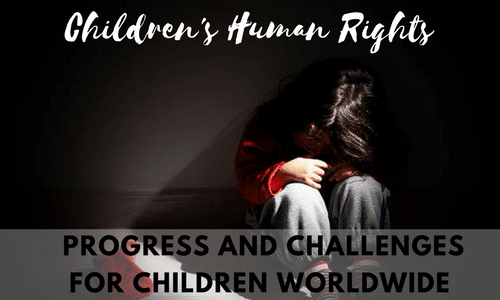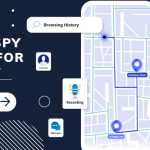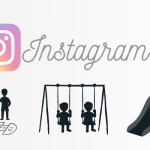Any human being below the age of eighteen is defined as a child by the Convention on the Rights of the Child (CRC) and have rights related to human identity, association with parents, physical protection, food, education, healthcare, civil rights and freedom from discrimination on the basis of religion, color, gender, national origin, disability, ethnicity and other characteristics. Unfortunately, many of the children worldwide are being forced to face worst situations and are needed to be recognized as participants in society whose rights and duties should be recognized.
Children’s Human Rights
Sir William Blackstone recognized child’s right to receive protection, maintenance, and education from parents. In 1924, the children’s rights were defined as the right to receive the necessities for development and protection from exploitation. The hungry child has a right to be fed, the sick has a right to receive healthcare, the orphan and displaced has a right to receive shelter and a backward child has the right to be reclaimed. In 1948, the United Nations Universal Declaration of Human Rights recognized the need for motherhood and childhood and right of children to protection, assistance, and social protection. In 1959, the United Nations General Assembly articulated ten principles for the protection of child’s human rights. Some researchers are of the view that the children’s rights are not still well defined as there is not a single accepted definition or theory of children’s human rights.
Challenges for Children Worldwide
Children are our future and deserve to be protected and treated appropriately so they get the best footing in their lives. Regrettably, the children are facing worst situations in many nations around the world. They do not have physical protection and access to the basic needs of food, shelter, education, and healthcare. Learning about the challenges children have been facing worldwide can be an initial step to help them out.
Child Trafficking
Trafficking is a mounting issue prevalent in every region of the world particularly in the countries including Bangladesh, India, Sudan and Yemen. The children are being trafficked for the purpose of slavery, labor, and exploitation. Though human trafficking has been recognized as a serious crime worldwide, around 1.2 million children are traded each year according to the figures provided by the International Labor Organization. In UAE and other Gulf countries including Kuwait, Qatar, Oman, and Sudan, the trafficked children are being used as jockeys in camel racing. The separation of children from their parents and their transportation to a country with a completely different culture and language leaves the adolescents dependent on their traffickers who abuse them and do not fulfill their basic needs of food and health.
Child Prostitution
In Thailand, more than 30 percent of prostitutes are teenagers under 18. According to research conducted by the International Labor Organization in Vietnam, child prostitution is on the rise, and kids under 18 make up around 5 to 20 percent of prostitution varying on the geographical area. UNICEF estimated that there are 60,000 child prostitutes in the Philippines and more than 200 brothels in Angeles City that offer children for sex. When it comes to India, more than 200,000 Nepali teen girls, many under 14, have been sold in red-light districts. Every year, around 10,000 girl children between the age of 9 and 16 are sold to whorehouses in India. Around one-third of the sexually abused children in EI Salvador are boys between 14 and 17 years of age.
Child Pornography
Child pornography is being produced, viewed, and collected by pedophiles and child predators. The sexually explicit images and videos involving adolescents are privately used by the pedophiles, traded with other pedophiles, used by the predators for preparing children for sexual abuse, and enticing to trap children for the production of new child pornography and child prostitution. Child pornography is illegal in many regions of the world and 94 Interpol member states had laws addressing child pornography. However, the inadequate funding is keeping law enforcement from investigating the reported cases.
Child Labor
According to the International Labor Organization, more than 211 million children between the age of 5 and 14 are working worldwide. Of these, around 120 million children are working full time to support their families. The labor of these millions of children can be considered as forced because not just they are too young to choose to work but they are actually forced into working. It includes child bonded labor wherein children are pledged by their parents or are sold to another family at a very early age. It also includes the children who ran away from their families or get kidnapped and imprisoned in brothels.
Child Neglect
Child neglect can have devastating consequences as the neglected children may face a delay in understanding and communicating language. The parental neglect behaviors include not providing enough clothes, not keeping children clean, not providing education, not providing comfort when the child is upset, not helping in doing homework, and not helping when the child is in trouble. Childhood neglect is around 36% in Korea, Pusan, 19% in Singapore, 10% in Canada, Montreal, Quebec, and 3.2% in the United States and New Hampshire.
Deprived of Education
Around 100 million children around the world do not have access to schools. Of those who enroll in primary school, 150 million children drop out. Seventy-sevenIn addition, a million children are not able to attend school because of not having enough funds. In third-world countries, around 15% of teens and adults between 15 and 24 are illiterate. In addition to the unavailability of funds, the distance and location also keep children from accessing and attending schools. In mountainous areas of India, China, and many Asian countries, the severe weather conditions make it challenging for children to follow school for more than seven months of the year. Gender is another factor that keeps many girl children deprived of education.
Refugees Children
Around 50% of the 50 million refugees and displaced people worldwide are children. Wars and terrorism are among the prime factors producing more and more refugees and causing child death, injuries, and loss of parents. In the last few years, the conflicts between nations and states have killed more than 2 million children, injured 6 million, and orphaned 1 million. As well as the terror situations, child labor, sexual abuse, and slavery are causing children to flee their homes and homelands. Africa is among the countries creating many orphans, refugees, displaced and separated children due to civil wars and AIDS.
Poverty
As calculated by UNICEF, around 25000 children die each day due to poverty. In developing countries, approximately 28% of all children are underweight or stunted. Around 1.1 billion people in these countries do not have access to drinking water and 2.6 billion do not have basic sanitation facility. Almost 1.8 million children die each year due to diarrhea. Of the 1.9 billion children from underdeveloped countries, 640 million does not have shelter, 270 million does not have access to healthcare and 400 million do not have access to safe drinking water. Almost 1.4 million children die each year due to not having access to clean drinking water and sanitation. Around 2.2 million children die because they are not immunized.
The Bottom Line
Children’s human rights are violated in all the regions of the world. The children forced into slavery, child prostitutes, child soldiers, hungry, sick, neglected, orphaned and displaced children are more prevalent. Though a great effort is required by the nations and law enforcement to implement children’s human right, the parents can individually play their role in the wellbeing of their children. Parents are responsible to provide protection to their children against the potential threats in the real and digital world. TheOneSpy supports parents to safeguard their kids from the child predators, pedophiles, traffickers and other vulnerabilities monitoring their online and offline lives. Monitor your kids to ensure their safety and get them learned the rights that are meaningful to their lives.







